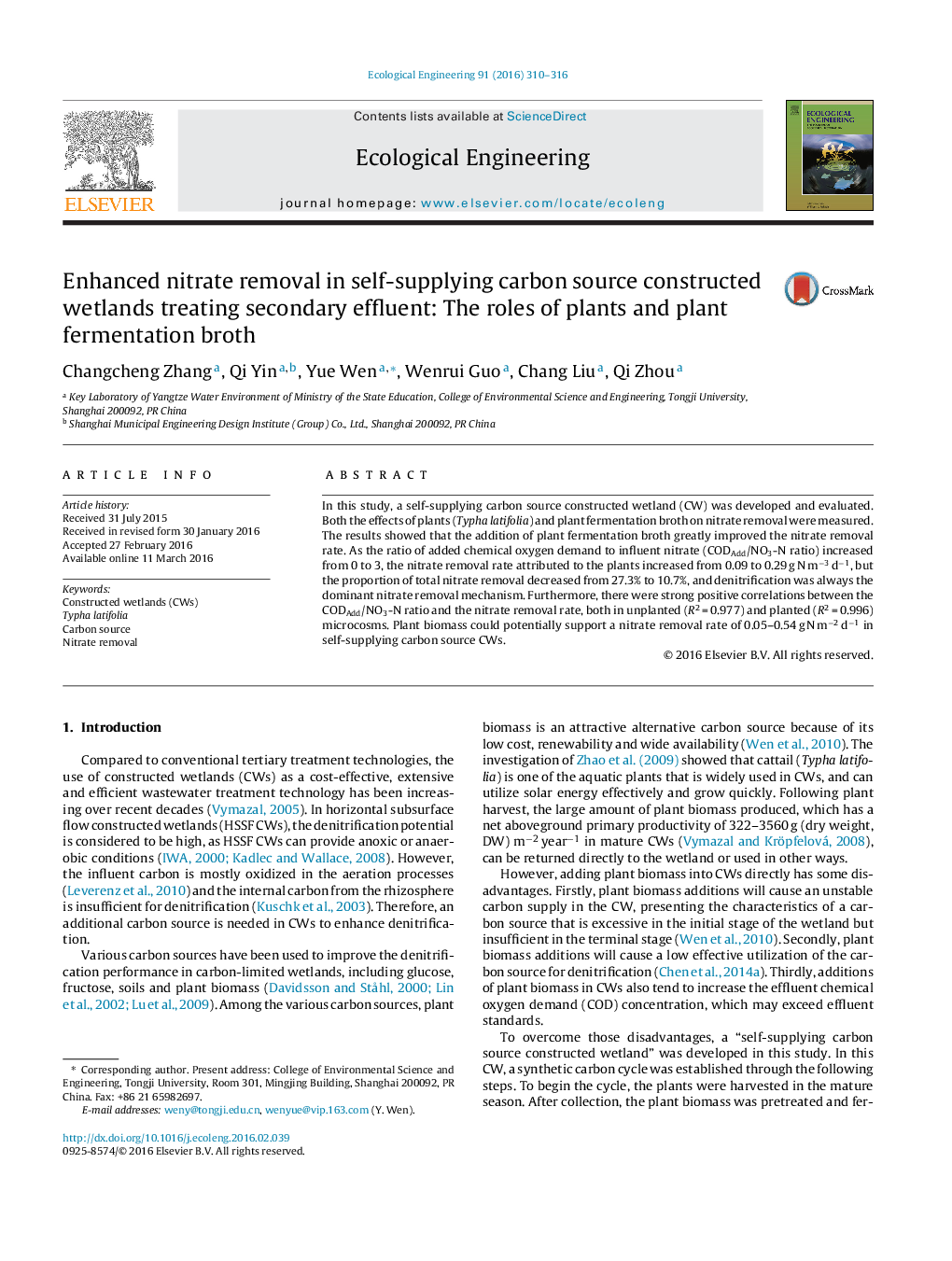| Article ID | Journal | Published Year | Pages | File Type |
|---|---|---|---|---|
| 6301333 | Ecological Engineering | 2016 | 7 Pages |
â¢A self-supplying carbon source CW was developed and evaluated in this study.â¢Plant fermentation broth addition greatly improves the nitrate removal rate.â¢Plants have diverse effects on nitrate removal at different CODAdd/NO3-N ratios.â¢0.055 g N nitrate can be removed by 1 g (dry weight) raw plant litter.â¢Plant biomass supports a nitrate removal rate of 0.05-0.54 g N mâ2 dâ1 in HSSF CWs.
In this study, a self-supplying carbon source constructed wetland (CW) was developed and evaluated. Both the effects of plants (Typha latifolia) and plant fermentation broth on nitrate removal were measured. The results showed that the addition of plant fermentation broth greatly improved the nitrate removal rate. As the ratio of added chemical oxygen demand to influent nitrate (CODAdd/NO3-N ratio) increased from 0 to 3, the nitrate removal rate attributed to the plants increased from 0.09 to 0.29 g N mâ3 dâ1, but the proportion of total nitrate removal decreased from 27.3% to 10.7%, and denitrification was always the dominant nitrate removal mechanism. Furthermore, there were strong positive correlations between the CODAdd/NO3-N ratio and the nitrate removal rate, both in unplanted (R2 = 0.977) and planted (R2 = 0.996) microcosms. Plant biomass could potentially support a nitrate removal rate of 0.05-0.54 g N mâ2 dâ1 in self-supplying carbon source CWs.
Graphical abstractDownload high-res image (243KB)Download full-size image
